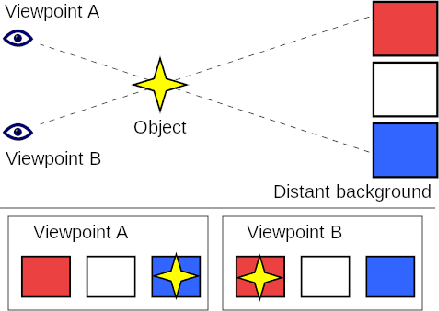
Next: Other monocular cues Up: 6.1.1 Monocular depth cues Previous: Accommodation Contents Index
 |
Up until now, the depth cues have not exploited motions. If you have ever looked out of the side window of a fast-moving vehicle, you might have noticed that the nearby objects race by much faster than further objects. The relative difference in speeds is called parallax and is an important depth cue; see Figure 6.6. Even two images, from varying viewpoints within a short amount of time, provide strong depth information. Imagine trying to simulate a stereo rig of cameras by snapping one photo and quickly moving the camera sideways to snap another. If the rest of the world is stationary, then the result is roughly equivalent to having two side-by-side cameras. Pigeons frequently bob their heads back and forth to obtain stronger depth information than is provided by their pair of eyes. Finally, closely related to motion parallax is optical flow, which is a characterization of the rates at which features move across the retina. This will be revisited in Sections 6.2 and 8.4.
Steven M LaValle 2020-01-06